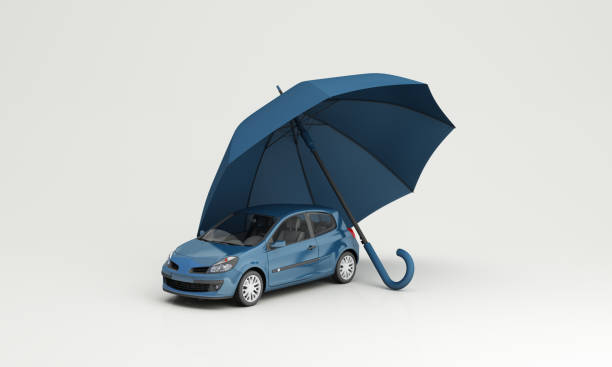Have you heard that the average person spends around $800 on car repairs each year?
Owning a car is a major investment, so safeguarding it against various weather conditions is a responsible part of car ownership. Sun damage, cold weather, and chipped paint are among the challenges that can impact your car’s appearance and performance.
By adopting preventative strategies, you can ensure your vehicle remains in top-notch condition regardless of the weather. Read on to unpack comprehensive tips on protecting your car from all weather conditions.
Park in a Smart Way to Avoid Sun Damage
Sunshine is enjoyable for us, but its effects on your car can be less than pleasant. Everyday exposure to UV rays can lead to faded paint, cracked dashboard materials, and even damage to the interior fabrics. To protect your car from sun damage, it’s advisable to park in shaded areas whenever possible.
Seeking out spots under trees or within covered parking structures can reduce the impact of direct sunlight. You might also want to consider investing in a car cover designed to offer UV protection. Applying high-quality car wax often will also shield your car from the sun’s harmful effects.
Prepare for Winter Weather
Winter weather, especially in regions with snow and ice, demands special attention to ensure your car’s well-being. To shield your vehicle from the cold, begin by checking the antifreeze levels and using winter-grade oil to maintain proper engine function. Equipping your car with winter tires provides enhanced traction on icy roads, reducing the risk of accidents.
Prior to the winter chill, ensure that your car’s heating system and defrosters are in optimal working condition. It’s also wise to keep essential winter tools, such as an ice scraper, snowbrush, and a small shovel, in your car in case of unexpected snowy situations.
Get Regular Washes to Prevent Paint Damage
A well-maintained paint job not only enhances your car’s appearance but also preserves its resale value. Road debris, dirt, and chemicals can gradually wear down the paint over time. To prevent paint damage, incorporate regular car washes into your routine, especially after exposure to rain, mud, or salt on winter roads.
Applying a protective wax coat every few months serves as a barrier against dirt and helps maintain the glossy finish.
Invest in Proper Car Protection Accessories
Sometimes, a modest investment in protective accessories can yield significant benefits. Weather-resistant floor mats act as a shield against water and mud infiltration into your car’s carpet. This prevents unpleasant odors and mold growth.
Using a sunshade for your windshield not only keeps the interior cooler but also safeguards the dashboard from cracks due to excessive heat exposure. Cargo liners are also valuable additions. They protect your trunk or cargo area from spills and potential damage.
Do Regular Maintenance Checks
Preventative measures extend beyond exterior protection. Regular maintenance checks are equally vital. Monitoring fluid levels, brakes, lights, and tire pressure is essential.
You can’t ignore the recommended maintenance schedule. This ensures that your car’s components remain in optimal working condition. This will enhance its ability to navigate diverse weather conditions well.
Use Sealant to Guard Against Winter Salt
Road salt works wonders for melting ice during the winter. It poses a risk of corrosion and rust on your car’s undercarriage, though. Applying a sealant to the undercarriage before winter sets in can create a protective barrier against salt and moisture.
After winter, consider having your car professionally cleaned, including its undercarriage. This will eliminate any salt residue that may have accumulated.
Keep Your Car Covered
Providing your vehicle with a protective cover offers substantial defense against various weather conditions. This could include a simple carport, a garage, or a car cover. Covered parking spaces shield your car from the following:
- Direct sunlight
- Rain
- Hail
- Falling debris
Is covered parking unavailable? Investing in a waterproof and UV-resistant car cover serves as a cost-effective alternative.
Mind Your Driving Habits
Your driving habits have a major impact on your car’s exposure to weather-related damage. Avoid potholes and rough roads, especially during winter when road surfaces can be compromised. This will prevent unnecessary car wear and tear.
Exercise caution while driving in heavy rain or snowstorms. This could stop accidents and minimize potential damage to your car’s exterior.
Be cautious when parking near trees during storms. This prevents falling branches from causing harm to your vehicle.
Use Rust Preventative Methods
Rust can be a relentless enemy for your car, especially in areas with high humidity or where road salt is used. To combat rust and extend your car’s lifespan, consider using rust prevention methods. Apply a rust inhibitor or rustproofing spray to vulnerable areas, including the following:
- The undercarriage
- Wheel wells
- Exposed metal parts
This can provide an extra layer of rust defense. Don’t slack when it comes to washing your car as well. Giving it a rinse and a new layer of wax will keep rust at bay.
Maintain Adequate Tire Care
Your car’s tires are where you meet the road. This makes their maintenance crucial for safe and efficient driving in various weather conditions.
Check your tire pressure often since temperature changes can affect tire inflation. Under-inflated tires can reduce fuel efficiency and compromise handling. Over-inflated tires can lead to reduced traction and uneven wear.
Rotating them at recommended intervals ensures even wear and extends their lifespan. You should also consider using different sets of tires for summer and winter. Specialized tires can offer better grip and performance in specific weather conditions.
Now You Can Start Protecting Your Car From All Weather Conditions
Protecting your car from diverse weather conditions is paramount. You can keep everyone in your car and in other surrounding cars safe. Follow this advice to stay calm during all types of weather.
Craving more auto and motor content? Scroll through our blog!


